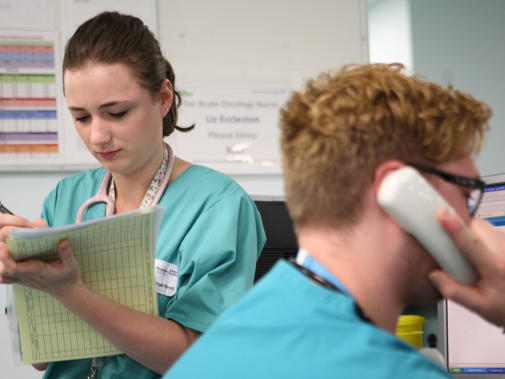
Payslips can be very confusing, especially as a junior doctor as you move from rota to rota and between health boards. While we would notice if we didn’t receive our pay every month, very few people regularly check their payslips. With something as important as pay, it’s a good idea to know what to look out for.
Right, is an example of a payslip:

We will now look at the main areas to familiarise yourself with:

These boxes contain your job title and ensure you are on the correct point of the pay scale. You are able to access the current scales on the NHS Wales website.
You will see that there is a point 00 on the pay scale (this is known as the minimum point), which is where you will be placed if you do not have any previous NHS service that enables you to be placed at a higher point. Generally, when you change grade, (eg, from the foundation year 2 to specialty registrar) you are placed at the next highest point on the new scale to ensure your basic pay does not decrease.
Further information on banding and working out if you’re in the correct band is available in the BMA junior doctors handbook. This is a complex area, so we would advise you to contact us if you have any queries.
It’s important to note that if you’re a flexible trainee, your basic pay is a proportion of full-time pay and not based on your training percentage.

You will notice that next to your job title, there is a code comprised of two letters and two numbers. This code informs you which pay scale is applicable to your role, ie MN37 specialty registrar.

The highlighted section represents your tax code and your NI letter and number. It’s important to ensure these are correct.

This is your incremental date which reflects the point of the year where you progress from one pay point to another. This can sometimes be reset in error when you move to a new health board, which can affect when you receive your annual pay increase – so it’s important to regularly check this date remains the same.
If your incremental date is wrong and you incur difficulty when speaking to payroll, check with human resources in your health board to see if your transfer certificate from your previous employer is correct. If not, you can use previous payslips as evidence of your correct incremental date and pay point.

In addition to the annual increase of salary in line with your increment date, there is an annual pay increase in line with the Doctors and Dentists Review Body. This is usually carried out in April of each year but can take some months to be applied. This is yet another reason to make sure you regularly check your payslips to determine if the payments have been made. They will usually show as basic pay and banding, which should account for arrears that is owed to you.
There will automatically be deductions to your gross pay for payments such as income tax or PAYE (Pay as You Earn), national insurance and pension (unless you have opted out). For junior doctors, your pensions contribution is 7.1% of your basic salary (ie, excluding banding). You may also find deductions such as your student loan repayment, which can vary depending on your income.
It can be confusing to get your head around but remember, BMA members can contact our employment advisers and we’ll talk you through any queries you may have.
Charlotte Dixon is a BMA Cymru employment adviser.

